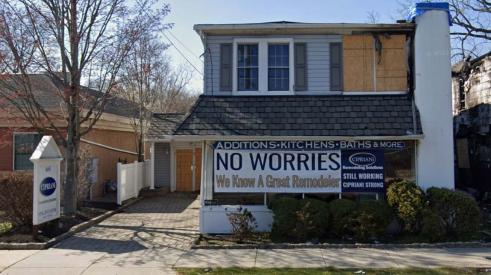Editor's note: Wendy A. Jordan will answer remodelers' most difficult questions and report them in our new feature, Executive Insight. Jordan's vast array of contacts and deep knowledge of the industry give her uncommon ability to research and report solutions that have been shown to work. Not theory — proven best practices. Send your question to jonathan.sweet@reedbusiness.com.
Can remodeling contractors survive a strategy of radical discounting?
— Kitchen and bath designer, California
The short answer is no. If you slash prices deeply to generate business, you may see success in the short-term, winning contracts from bargain-hunting homeowners. In the long run, though, you are setting yourself up for failure.
Radical discounting is a topic that stirs strong emotions among established remodelers. I contacted several around the country, and they said it is business suicide for all but extremely large companies, and eventually those giants, too. As design/build remodeler Iris Harrell of Harrell Remodeling in Mountain View, Calif., put it, the only way to survive radical discounting is to stop doing it. Now.
Say you cut prices by 20 percent or more, which is one general definition of radical discounting. You've fried your profit and probably a good share of your overhead coverage. Even if the low prices draw new business, your company has only so much sales and production capacity. You'll never be able to make up the lost revenue through increased volume.
Radical discounting carries another danger as well. It devalues your company. And once you start down that road, it's hard to turn back. Jesse Morado is a remodeling pro who now runs a residential remodeling consulting firm, Renovation Coach, in Atlanta. He warns that repositioning yourself as a low-price company moves you into the market niche of bottom-dollar companies. It's a whole different world where buyers fixate on price negotiation and don't think about the workmanship, customer service and reliability. You will have to cut corners to save money — perhaps reducing the number of workers on the job, providing less frequent production oversight, scheduling fewer dumpster pickups, doing less painstaking site protection, and so on. All this raises the risk that you will make more errors, fall behind, disappoint your clients and sow the seeds of negative PR. That's a deadly price to pay.
Moderate price reduction is a different matter. Many remodelers are tightening their operations to lower their estimates a few percentage points. The difference is that they are calculating the price cuts around careful cost cutting that protects the quality of their remodeling product and safeguards their profit margin.
Morado says that by doing a line-by-line analysis of projects completed in the last year you may be able to identify a 25 percent savings without altering your margin. Look at the schedule: Is there waste? Can you shave off some labor hours? Could you save money, without hurting quality and control, by subbing out some aspects of production? And so on.
Over the past five years, Dave Bryan has systematically cut costs within Blackdog Builders in Salem, N.H. Today it costs $1 million less to run the $5 million-volume operation.
At Atlanta's Small Carpenters at Large, Danny Feig-Sandoval is doing a company-wide cost analysis now. He's looking not only for savings within the company; he's asking suppliers and subcontractors to pass along savings. He's also shopping other high-quality trades, which he figures may uncover better prices and keep him more attuned to competitive rates.
Belt-tightening may enable you to reduce your bids somewhat, but they are likely to be higher than the prices quoted by low-ball companies. So be it. You also can offer multiple options, including modest, economical designs, along with more full-bodied plans. For example, says Harrell, you could base estimates on grade A or good-quality-but-less-expensive grade B cabinets, depending on the homeowners' priorities and budget.
| # Projects | Avg. Project Price | Costs | |
| Sales | 20 | 50,000 | 1,000,000 |
| Direct Project Costs | 20 | 30,000 | 600,000 |
| Gross Profit | 400,000 | ||
| GPM | 40% | ||
| Fixed Costs/OH | 275,000 | ||
| Net Profit | 125,000 | ||
| NPM | 12.50% | ||
| Discounted 10% Sales with Customer in Ohio | |||
| # Projects | Avg. Project Price | Costs | |
| Sales | 20 | 45,000 | 900,000 |
| Direct Project Costs | 20 | 30,000 | 600,000 |
| Gross Profit | 300,000 | ||
| GPM | 33% | ||
| Fixed Costs/OH - Cuts in staff | 200,000 | ||
| Net Profit | 100,000 | ||
| NPM | 11.11% | ||
| DISCOUNTED SALES WITH CUTS IN OVERHEAD | |||
| THE COMPANY IS STILL VIABLE AS LONG AS SALES VOLUME HOLDS UP. | |||
| Effect with Continued Loss of Sales | |||
| # Projects | Avg. Project Price | Costs | |
| Sales | 12 | 45,000 | 540,000 |
| Direct Project Costs | 12 | 30,000 | 360,000 |
| Gross Profit | 180,000 | ||
| GPM | 33% | ||
| Fixed Costs/OH - Cuts in staff | 200,000 | ||
| Net Profit | -20,000 | ||
| NPM | -3.70% | ||
| DISCOUNTED SALES WITH DROP IN SALES; THE COMPANY'S BLEEDING CASH. | |||
| SOURCE: JESSE MORADO, RENOVATION COACH
In today's market, what can we do to grab the attention of prospects and differentiate ourselves from the competition? — Remodeling design specialist, Illinois We know the remodeling market has changed in many ways since the economy went south. Even the top clients of the market are affected. Mason Hearn, owner of HomeMasons, a high-end remodeling company in Manakin-Sabot, Va., says, "Folks who have plenty of money and security to do what they want seem to be sitting on their wallets." It sounds odd, but to stand out from the crowd and stimulate business in this changed buying environment, one important thing for established companies to do is not to change. You built a name for your company doing something well. Focus on that strength in talks with prospects as a way to differentiate your company and bond with homeowners who are a good fit for you. The idea is to sell value — specifically the value your professionally managed company has to offer. But it accomplishes more than that. As you describe your services, you will be steering prospects away from bargain-basement contractors and other competitors without saying a word against them. Your selling message will be strong and positive, not defensive. Kuhn Construction of Oakland, Mo., won remodeling awards this year, so owner Rick Kuhn is using that achievement to market the company's superiority. Dennis Gehman of Gehman Custom Builder in Harleysville, Pa., adds value and stands out from the competition by providing a five-year warranty on workmanship. The company has almost no calls for workmanship warranty work "so we took the risk" to offer this, he says. When Pennsylvania put a contractor registration law into effect in July 2009, Gehman gained another differentiating factor. All contractors in the state must register, display their registration number and include certain buyer protections in their contracts. "The small guys are not registering," Gehman says. He simply tells prospects about the new law and refers them to the state Web site for more information. Remodeling coach Jesse Morado advises contractors to survey prospects and clients and then to use the databases actively. Customer feedback information serves as a third-party endorsement of what you do well and makes prospects wonder why your competitors have no such information. Using data from past clients who sold their homes, Mason shows that HomeMasons remodeling projects boost resale value. HomeMasons is not the cheapest company around, but prospects see that the project quality represents a good investment. Mining records about prospects — even one-time callers — helps you to keep communications active. That is something most remodelers do need to change in today's market. Don't be pushy, but do stay in touch. Follow up on every contact homeowners make with your company. Call every homeowner who contacted your company over the past year, simply to touch base and ask if you can be helpful. Ask about their remodeling wants and needs, ask about any changes in circumstances that might affect their remodeling priorities. After you make a presentation on a sales call, most prospects will say they want a few days to think about their remodeling plans. Ask when you might expect to hear from them. If they do not contact you when promised, make a polite, low-pressure call to them to ask if they have any questions. |
|||
| Author Information |
| Wendy A. Jordan, CAPS, has more than 30 years of experience covering the residential remodeling industry as an award-winning writer and trade magazine editor. She's the author of many books on residential remodeling, most recently "Universal Design for the Home" and a 2009 edition of "The Paper Trail: Systems and Forms for a Well-Run Remodeling Company." |
Remodelers won't survive long slashing prices
Add new comment
Related Stories
4 Steps to Prep Your Business for Contraction
How a remodeling company plans ahead for the worst of times (and the best of times)
Creating a Company Fire Drill: How to Prepare for the Worst
A disastrous fire could have been a lot worse if the business wasn’t prepared for the unexpected
The Fundamentals of Growing Profitably
On this episode of Women at WIRC podcast, Nip Tuck Remodeling Owner April Bettinger shares how she plans for her company's profitable growth
3 Things to Add to Your Construction Contract—From a Lawyer
Did you know you can add these three elements to your contracts?
Study Finds Remodelers’ Net Profits Declined
How far did net profits decline and what's influencing the drop?
The Home Depot Bets on Pros Amid Predictions of Flat Sales Growth
For the first time since 2019, The Home Depot’s revenue fell short of Wall Street’s predictions amid a general softening in the home improvement market
Indicators of a Softening Market and How to Prepare
Market conditions could be changing, but don't panic. Richardson shares ways to stay on top of market conditions and how to prepare for any potential softening down the road.
Grow Your Business Through Collaboration with Remodeling Peers
Remodeling Mastery Forums offers a unique business opportuniy for remodelers












